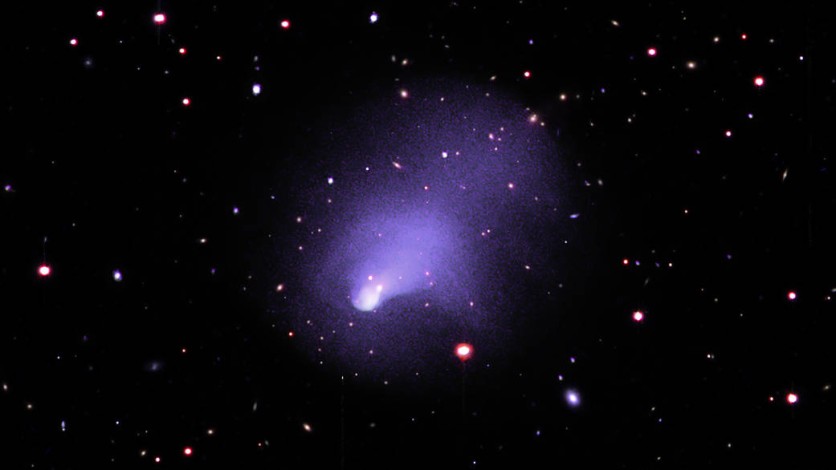NASA just released a magnificent image of Abell 2146, a pair of colliding galaxy clusters situated approximately 2.8 billion light-years from Earth, that was the product of a protracted observation with the Chandra X-ray Observatory

Galaxy Cluster Collisions
Hundreds of galaxies and massive amounts of hot gas and dark matter make up galaxy clusters, among the largest universe formations. Galaxy cluster collisions provide tremendous amounts of energy unlike anything seen since the Big Bang.
A heated gas surrounds galaxies and fills the gaps between them. It has more mass than the entire cluster of galaxies. Astronomers estimate that around ten times more mass is required to hold the cluster together despite the huge nature of the galaxies and heated gas clouds. Dark matter, specifically, must exist to produce extra gravity.
Galaxy clusters are thought to form when clumps of dark matter and their accompanying galaxies are drawn together by gravity to create groups of dozens of galaxies, which then merge to form clusters of hundreds, if not thousands, of galaxies.
These mega-mergers are observed in Chandra's photos. As relatively cold 50 million degree Celsius clouds of gas descend into far larger and hotter clouds, and as such cosmic "weather systems" that are millions of light-years away are observed.
A galaxy cluster takes a long time to be formed. The amount of dark matter in the cosmos, whether hot or cold, how fast the universe is expanding, and other factors influence how long it will take.
Read also : NASA Hubble Space Telescope Snaps Largest-Ever Image of the Universe - Rare Galaxies Spotted!
Chandra's Investigations
Chandra's investigations of hot gas clouds in galaxy clusters could reveal more about the universe's origin, evolution, and future, according to NASA.
The impact of the cluster gas dispersing the cosmic microwave background passing through the cluster from the abyss of the universe can be measured using a combination of X-ray and microwave studies.
The quantity of dispersion allows the distance to the cluster to be calculated, and this data can be used to calculate the universe's size and age, as explained by NASA.
Furthermore, initial X-ray observations suggested that the cooling was happening so quickly that hundreds of young stars or cool gas clouds should be developing in the centers of numerous clusters every year. Astronomers discovered some cool matter while looking for it, but not quite enough.
Recent Chandra and XMM Newton X-ray Observatory measurements of galaxy clusters, as well as radio data, may point to a solution to this conundrum.
Their observations reveal that the intake of cooling gas appears to be redirected by magnetic fields in several cases and possibly heated by explosions from the proximity of a supermassive black hole at the galaxy's core.
In the coming years, NASA claimed that it should be obvious whether such violent action is to account for the cool gas scarcity.
This article is owned by Tech Times
Written by Joaquin Victor Tacla




